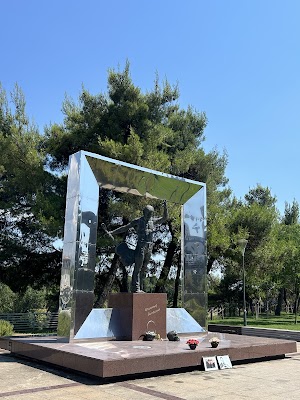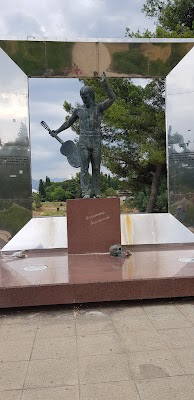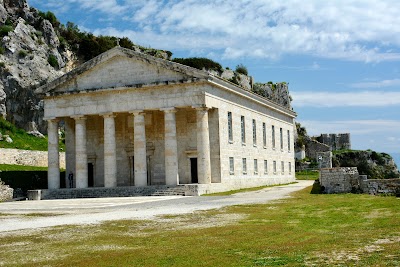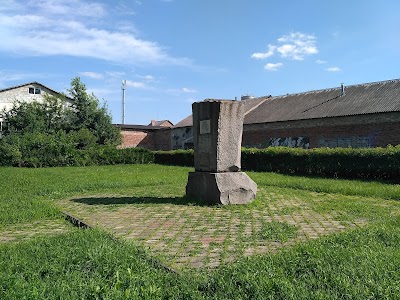Vladimir Vysotsky Monument (Spomenik Vladimiru Vysotskom)
Overview
The Vladimir Vysotsky Monument in Podgorica, Montenegro, stands as an impressive tribute to one of the Soviet Union's most influential cultural icons. Nestled in the heart of Montenegro's capital, this statue is a must-visit for travelers eager to explore the deep cultural connections and rich history that interweave this region with the rest of the world.
Erected in 2004, the monument honors Vladimir Vysotsky, a prolific Russian singer, songwriter, and actor whose profound impact on 20th-century Russian culture is undeniable. By establishing this monument in Podgorica, Montenegro acknowledges Vysotsky's significant influence not just in Russia, but also across the broader Slavic world and beyond. His music and poetry, characterized by raw emotion and piercing truths, resonate deeply, transcending both linguistic and geographical barriers.
The statue is elegantly situated along the picturesque Morača River, offering a serene backdrop that enhances its solemn yet inspiring presence. Crafted by esteemed sculptors Drinka Radovanović and Birzhan Pramogin, the statue captures Vysotsky in a dynamic pose, holding a guitar—an instrument synonymous with his artistic identity. Standing three meters tall, this bronze sculpture exudes both strength and sensitivity, mirroring Vysotsky himself.
The history behind the monument’s creation is as compelling as Vysotsky's life. Unveiled as a collaborative gesture between Montenegro and Russia, it symbolizes a bridge of cultural and historical ties. This friendship is further emphasized by an accompanying plaque inscribed with verses from Vysotsky's poetry, showcasing his universal appeal.
More than a mere statue, the monument offers a deeper understanding of Vysotsky’s vast contributions to art and culture. He was celebrated for his candid depictions of social and political life in the Soviet Union, addressing themes of freedom, injustice, and personal struggle. His works often faced resistance from authorities, leading to their dissemination through underground channels—an act that only heightened his allure and the devotion of his fans.
Another intriguing aspect of the monument's location is its proximity to several other notable landmarks. Visitors can enjoy a scenic stroll along the river or explore the Millennium Bridge, one of the city’s architectural marvels, just a short walk away. This context adds an extra layer of enjoyment for those looking to blend cultural exploration with sightseeing in Podgorica.
While some may find the selection of this site for Vysotsky’s monument surprising, it reflects the significant influence of his artistry beyond the borders of his homeland. Montenegro, known for its passionate embrace of the arts, finds a kindred spirit in Vysotsky’s relentless pursuit of truth through his work. By commemorating him here, Montenegro pays homage to the universal language of art that connects diverse cultures.
Moreover, the monument has evolved into a vibrant hub for cultural events and gatherings, particularly those celebrating Russian-Montenegrin heritage. This active role transforms it into a living part of the community, rather than a static tribute. Cultural enthusiasts and casual tourists alike often find themselves drawn into spontaneous concerts, poetry readings, and other artistic performances that echo the lively spirit of Vysotsky's own shows.
The Vladimir Vysotsky Monument is not only a tribute but also a celebration of an artist who conveyed the human experience with unfiltered poignancy. It serves as a reminder that true art knows no boundaries—whether geographical, political, or cultural. Visiting this monument offers an opportunity to immerse oneself in the narrative of a figure whose legacy continues to inspire and resonate across generations.
In summary, the Vladimir Vysotsky Monument in Podgorica is a significant touchstone for those interested in the confluence of Montenegrin and Russian cultures. It invites visitors to reflect on the enduring power of music and poetry while simultaneously enjoying the serene beauty of its surroundings. For tourists seeking both cultural enrichment and historical insight, this monument is a must-see, encapsulating how one artist's legacy can bridge seemingly disparate worlds.






